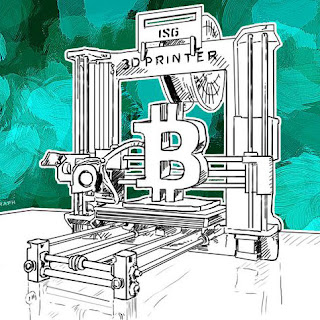No one. In 2009, Satoshi Nakamoto launched bitcoin as the world’s first cryptocurrency. The code is open source. These currencies aren’t physically printed in the shadows by a central bank, unaccountable to the population, and making its own rules. Those banks can simply produce more money to cover the national debt, thus devaluing their currency. Instead, bitcoin is created digitally, by a community of people that anyone can join.
Bitcoins are ‘mined’, using computing power in a distributed network. This network also processes transactions made with the virtual currency, effectively making bitcoin its own payment network. 2016 looks set to be different since the price of bitcoin is likely to be driven in large part by similar factors to a traditional fiat currency, following the age-old principles of supply and demand. Instead of being controlled by a central bank, bitcoin relies on so-called "mining" computers that validate blocks of transactions by competing to solve mathematical puzzles every 10 minutes. In return, the first to solve the puzzle and thereby clear the transactions is currently rewarded with 25 new bitcoins, worth around $11,000 BTC = BTSP.
But when it was invented in 2008 by the mysterious "Satoshi Nakamoto", who has yet to be identified, the bitcoin program was designed so that the reward would be halved roughly every four years, in order to keep a lid on inflation. The next time that is due to happen is July 2016. Bitcoin was also designed to emulate a commodity by having a finite supply of 21 million bitcoins, which will be reached in around 125 years, up from around 15 million today. Hence, also, the use of the term "mining".
Now the price of bitcoin could test its 2013 highs of above $1,100 next year and then pick up speed to rise to $4,400 by the end of 2017. “Bitcoins are divisible down to 8 decimal points, so only 2.1 quadrillion satoshis, smallest Bitcoin transaction unit, can ever be mined, which will not cover the approximately 2.12 quadrillion cents in circulation today within combined Euro, US and UK economies alone. Adding extra decimal points should not be a complex fix to implement.”

No comments:
Post a Comment